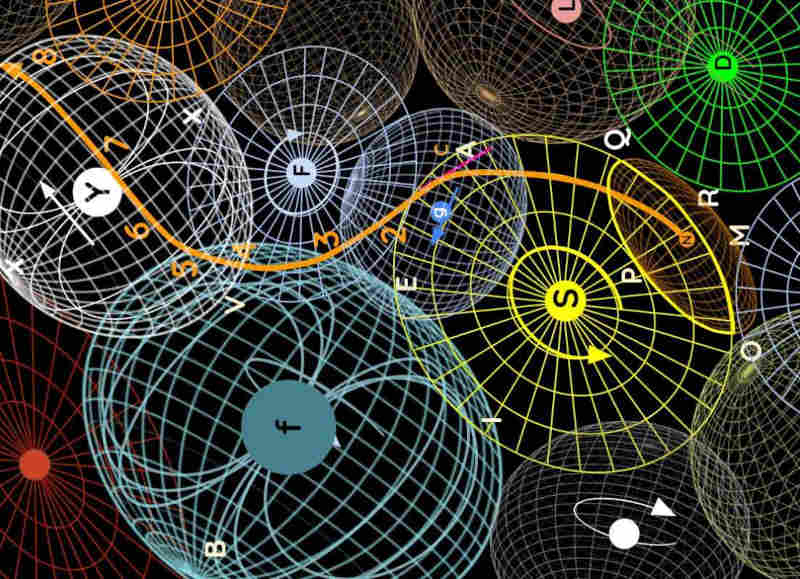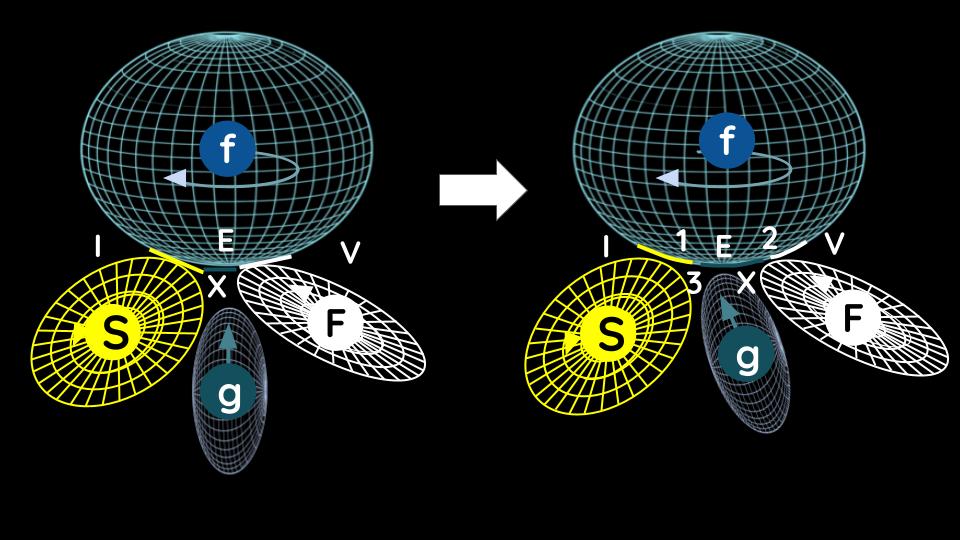The Poles of Vortices
Table of Contents
65. The poles of each vortex of the heavens touch parts of other vortices far from their poles.
No matter how the individual vortices were moved from the beginning, they will be arranged so that each one moves in the direction in which the motion of all surrounding vortices opposes it the least.
This is because the motion of each body can easily be deflected by encountering another body.

Vortex S, with centerS, moves fromAthroughEtowardsI.Vortex F, with centerF, must move fromAthroughEtowardsV, if no other surrounding vortices interfere. Thus, their motions will best agree with each other.Vortex g, forms a triangle with the centersSandF. It is connected with the other two vorticesAEIandAEVin the lineAE, should move fromAthroughEupwards.
Vortex f, with centerfcannot move:- from
EtowardsIto agree with the motion ofVortex Sbecause it would oppose the motions of VortexFand3. - from
EtowardsVlikeVortex Fbecause it would conflict withVortex Sand3. - upwards from
ElikeVortex 3, because it would conflict withVortex SandF.
- from
Therefore, it must have one of its poles towards E and the other in the opposite direction towards B. It rotates around the axis EB, from I to V.
66. The motions of these vortices are somehow deflected to harmonize with each other.
These motions will have some conflict if the disks of the first 3 vortices (the orbits most distant from their poles) directly meet each other at the point E, where the pole of Vortex f is located.
For instance, IVX are the parts of the other vortices next to pole E. It rotates from I to V to X. Then:
Vortex Swill scrape against it along the straight lineEIand other parallel linesVortex Fwill scrape against it along the lineEVVortex gwill scrape against it along the lineEX, thus somewhat opposing its circular motion.

But nature easily corrects this by slightly deflecting the disks of the first 3 vortices in the direction of the rotation of Vortex f.
This results in them scraping against it not along the straight lines EI, EV, EX, but along the oblique lines 1I, 2V, 3X, thereby fully harmonizing with its motion.
67. The poles of two vortices cannot touch each other.
If we suppose the poles of 2 vortices to touch each other, either both will move in the same direction and thus merge into a single vortex, or they will move in opposite directions and thus be in maximum conflict with each other.
I do not presume to determine the positions and motions of all the vortices in the heavens.
However, the poles of each vortex are not as close to the poles of other adjacent vortices as they are to parts far removed from their poles.
68. These vortices are of unequal size.
The inexplicable variety in the positions of the fixed stars shows that the vortices around them are not equal in size.
Fixed stars exist only at the center of such a vortex. This is evident from their light.
From the fixed stars, we perceive only their light and apparent position.
But the vortices of air-aether revolving around them explain their light just as the unequal vortex sizes explain their apparent position.
This inequality in size means that some vortices far from the poles touch the poles of others. This is how small and large vortices can fit together.